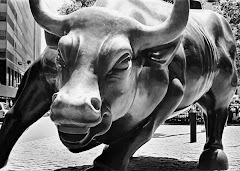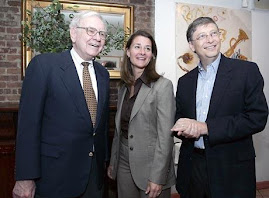Brand Power: Popular Bookstore
How to know whether Popular has a strong brand? Only an idiot will ask such a question because almost every Singaporean heard of Popular and visited its bookstore at least once in his/her lifetime. If you take a walk to Popular at the end of the year, you will be impressed. This because many parents will spend on books and stationeries for their children before school re-opened. I did that too, for my student. Almost 10 tens ago, I was a Sunday School teacher then. Besides bible and prayers in class, I love to play simple games with my little students. I invented many games and I spend on little gifts out of my own pocket. So I went to Popular, grabbed a basket and swept the packed stationery into my basket. People were looking at me and since I was relatively young then (and still young now!), most probably I would be perceived to be a teacher. The important question here is: why didn't I spent in a small bookstore located around the neighbourhood? How to explain the fact that I "automatically walked into Popular" to purchase my gift?
Valuations
I had gone through Popular’s financial reports for past few years. My spreadsheet auto-compute the ratios and my interpretation as follow:
How to know whether Popular has a strong brand? Only an idiot will ask such a question because almost every Singaporean heard of Popular and visited its bookstore at least once in his/her lifetime. If you take a walk to Popular at the end of the year, you will be impressed. This because many parents will spend on books and stationeries for their children before school re-opened. I did that too, for my student. Almost 10 tens ago, I was a Sunday School teacher then. Besides bible and prayers in class, I love to play simple games with my little students. I invented many games and I spend on little gifts out of my own pocket. So I went to Popular, grabbed a basket and swept the packed stationery into my basket. People were looking at me and since I was relatively young then (and still young now!), most probably I would be perceived to be a teacher. The important question here is: why didn't I spent in a small bookstore located around the neighbourhood? How to explain the fact that I "automatically walked into Popular" to purchase my gift?
Valuations
I had gone through Popular’s financial reports for past few years. My spreadsheet auto-compute the ratios and my interpretation as follow:
.JPG)
.JPG)
- Profit & loss. Since 2004, Popular’s turnover has been on a steady up trend. For the financial year ended Apr 2007, turnover has a compounded annual growth rate of 4.65%. However, administrative expenses have also increased steadily over the year mainly due to labour cost and rental expense. Every Popular’s outlet requires large floor area and thus resulting in high rental expense. Popular’s finance expense has been very low. It has a very low gearing of less than 10% due to low borrowings. The net profit has fluctuated badly for last 3 years like a roller coaster and this is not something that will attract value investors.
- Liquidity. Popular’s liquidity is acceptable at around 1.8:1. Popular has about 47 cents cash to meet every $1 debt obligations.
- An important strength of popular is that it is cash rich. For every share you invest in, it is supported by 11 cents. Assuming at current price of 30 cents, you actually pay 19 cents for its assets.
- Margin. The operating margin is thin and has been fluctuating since 2004. This is a big negative as we would like to invest in a company with a more stable profit and growth.
- Due to the fluctuation in net profit, Popular’s return on equity suffers the same fate.
- PE. Assuming at price of 30 cents in Aug 2007, Popular is priced at 12 times PE. With current bullish market, 12 times PE is considered to be attractive.
- NTA. With continuous growth since 2004, Popular’s net assets also grew from around 27 cents to 30 cents in Aug 2007. As such, the PTB ratio is about 1 time. This may not look attractive but is reasonable.
- Business growth. Popular’s retail and distribution business has been growing steadily at about 5% per year. However, the publishing and e-learning business seems to be running out of steam. Data also suggest that Popular enjoy higher growth in Malaysia followed by Singapore. In 2007, Popular announced the development of two residential properties; one at Shelford road and another one at Robin road. With strong demand for properties in Singapore, I believed that cash used in property development would enhance shareholders’ value very soon. On 10 Sep 2007, Popular issued their first quarter result for financial period ended 2008. On month-on-month basis, Popular’s profit after tax increased by nearly 40%. Higher chance is that Popular net profit for 2008 is likely to exceed that of 2007.
So, it is clear that Popular enjoys customer loyalty and thus recurrence sales. It is relatively cash rich and started to invest in lucrative property market. While it is difficult to quantify whether current price of 30 cents is undervalue, in my opinion, it is certainly not overvalued. Its share price has been rather stagnant for quite sometime. The reason was partly due to disappointed 2007 result plus US subprime crisis that affect global market. While it may be difficult to determine if Popular’s business will grow steadily, it has an important catalyst, the two residential properties. I believe that 30 cents is a good buy for Popular and has invested in it since early 2007.
- Liquidity. Popular’s liquidity is acceptable at around 1.8:1. Popular has about 47 cents cash to meet every $1 debt obligations.
- An important strength of popular is that it is cash rich. For every share you invest in, it is supported by 11 cents. Assuming at current price of 30 cents, you actually pay 19 cents for its assets.
- Margin. The operating margin is thin and has been fluctuating since 2004. This is a big negative as we would like to invest in a company with a more stable profit and growth.
- Due to the fluctuation in net profit, Popular’s return on equity suffers the same fate.
- PE. Assuming at price of 30 cents in Aug 2007, Popular is priced at 12 times PE. With current bullish market, 12 times PE is considered to be attractive.
- NTA. With continuous growth since 2004, Popular’s net assets also grew from around 27 cents to 30 cents in Aug 2007. As such, the PTB ratio is about 1 time. This may not look attractive but is reasonable.
- Business growth. Popular’s retail and distribution business has been growing steadily at about 5% per year. However, the publishing and e-learning business seems to be running out of steam. Data also suggest that Popular enjoy higher growth in Malaysia followed by Singapore. In 2007, Popular announced the development of two residential properties; one at Shelford road and another one at Robin road. With strong demand for properties in Singapore, I believed that cash used in property development would enhance shareholders’ value very soon. On 10 Sep 2007, Popular issued their first quarter result for financial period ended 2008. On month-on-month basis, Popular’s profit after tax increased by nearly 40%. Higher chance is that Popular net profit for 2008 is likely to exceed that of 2007.
So, it is clear that Popular enjoys customer loyalty and thus recurrence sales. It is relatively cash rich and started to invest in lucrative property market. While it is difficult to quantify whether current price of 30 cents is undervalue, in my opinion, it is certainly not overvalued. Its share price has been rather stagnant for quite sometime. The reason was partly due to disappointed 2007 result plus US subprime crisis that affect global market. While it may be difficult to determine if Popular’s business will grow steadily, it has an important catalyst, the two residential properties. I believe that 30 cents is a good buy for Popular and has invested in it since early 2007.
Lastly, in the first part of this article, I specially highlighted the term “gut feeling”. This is an important element when comes to investment. When I discussed with friends on whether if “Warren Buffett’s can be duplicated”, we came concluded that Warren Buffett cannot be duplicated. We may learn his investment methodology, follow his teaching and put it into practice. But there is just one thing that cannot be taught – gut feeling. We believed that with superior knowledge and strategy, supported with advance information system and special privilege to reach the top management of a company still doesn’t guarantee a 100% correct investment decision. There is just one more element that is needed, i.e. gut feeling. Take Popular for example, looking at its performance so far, another analyst may find the company's business has nothing to shout about, but I felt differently. This is my gut feeling.



